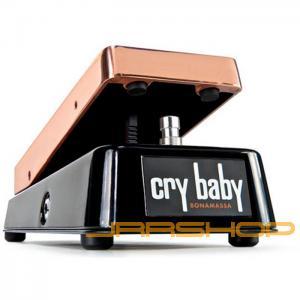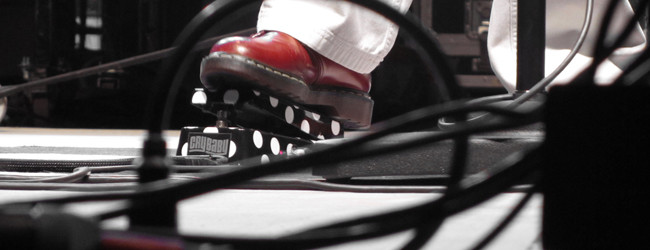
Colour in your signal is usually the effect of EFFECTS! Some purists would rather not go there, but some of us believe that effects are simply another source of inspiration and/or a platform for different guitar expression.
Following with our guitar signal path here at Tech Pan Alley, we are now passing to the next stage, the stompboxes. We will not be able to cover every effect to have gone through Blues, but we will discuss those usually stepped on by famous bluesmen (i.e. wah pedals and overdrives, modulation effects and delays and reverbs). These series of articles on stomboxes are structured to follow the order in which a “normal” guitarist would place them in their pedalboard.
Given the purist nature of our readership, we do not intend to discuss multi-effects and/or rackmounts units. Trusting this is ok with you all, we kick off with The Wah Pedal.
The wah pedal hit the market in the second half of the 60’s and it has been known since for its vowel characteristics that recreate the sounds of a human voice. (For a fascinating journey into the history of the pedal, we suggest you visit the Dunlop website and check out their Cry Baby documentary.)
Nowadays, there are many versions of the pedal, which gives the player a wide range of options but, in our view, the best experience sonically and in terms of feel has been with the “Classic” models from Vox and the famous Cry Baby Model from Dunlop. The wah is rather addictive and, unless you are Hendrix’ reincarnation, Blues guitarists would generally not want to over use it. Unlike your fellow band members, your ears will get used to it and you may end up carrying it along to every gig – as we said, it is addictive. Depending the way the pedal is used, the listener may not be able to distinguish all the notes played and the player’s technique may get muddy. In short, you do not want to get your solo playing dependent upon this effect.
Taking care of your Wah Pedal
We now move on to discuss some of the common issues that we guitarists found with these pedals. The first issue is where to place the Wah within your signal. In our view, the wah should be placed right after the guitar. This way the effect will affect your dry guitar signal only and will not carry any other undesired dirt with it. It is also the place where the wah will, to a certain level, have a more controlled interaction with your other pedals without losing level and/or giving you undesired sound results.
A further issue is noise and radio frequency interference. Noise is inherent to the nature of this pedal. Obviously, as with every effect setting/scenario, it will give you different outcomes depending on the type of gear you are using before and after the pedal. One way to reduce the noise is by using low gain settings – which is difficult since the wah in Blues is mainly used during solos – (wah) ooh yeah! – and who does not enjoy a little bit of dirt during those (at least) 24 bars of glory. Sometimes, if you listen carefully, you may be able to hear your gear picking up a radio station; the reason is likely to be your wah pedal. The standard noise suppressor is unlikely to be of much help in this situation and the cause may come down to one or a combination of many circumstances that we do not have much immediate control of such as the electric wiring of the venue, the quality of cables you are using and even the weather.
Another problem with this pedal is the potentiometer wear, which is quite logical given the very nature of this pedal. The solution to this problem is not complex, however. Basically, it involves either applying cleaning liquid to the potentiometer or replacing it. Both solutions are quite economic and even easy to sort it out without much expert assistance, so no need to buy a new pedal – unless you want one!
Playing Techniques
As a recommendation on playing technique, a guitar teacher once said, “This pedal has been misunderstood by many guitarists. Most people forget that the pedal is simply an expression pedal. It is not to be used solely to make you sound like wah-wah-wah-wah. Try experimenting the different sounds that the different positions of the rocking pedal delivers without you sounding like wah-wah-wah-wah all the time”. Wise words to keep in mind during your next wah experience.
Regarding “mods” to the pedal, there are too many cool mods to discuss them here, but one issue with modifying the pedal is that, with the range of options of wah pedals available in the market, it is probably easier and cheaper to find a stock, “unmoded” one that suits your individual need rather than modifying your current pedal.
Finally, in our view, the things to look for in a wah pedal are how it shapes your tone (with the pedal on and/or off – in case it is not true bypass) and the width of the pedal’s sweep range/frequency swing.
As recommendation, give the Jimi Hendrix and Joe Bonamassa Wah pedal models from Dunlop a try. We also recommend checking out “Wah Wah Blues”, by Earl Hooker, one of the early wah recordings.
We bring closure to this article with a question to our avid readership – What is your favourite wah wah moment in Blues?


